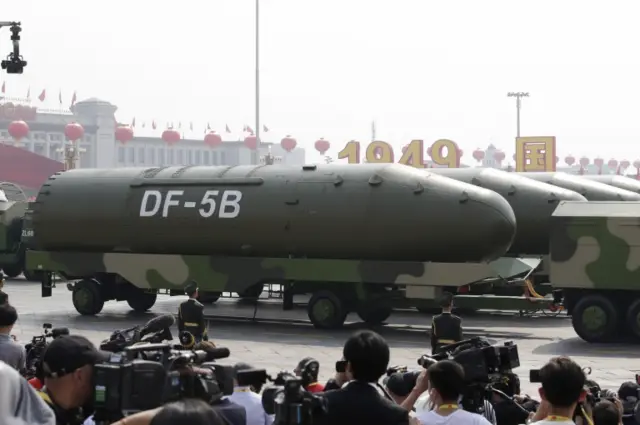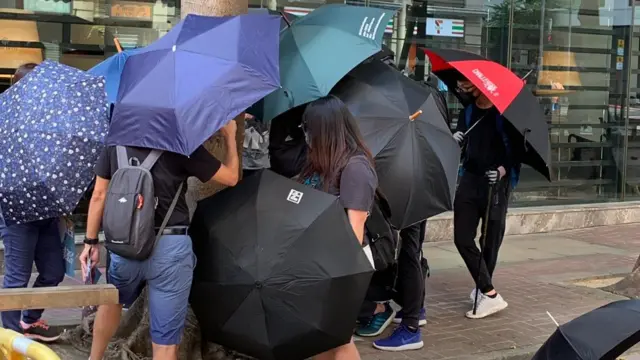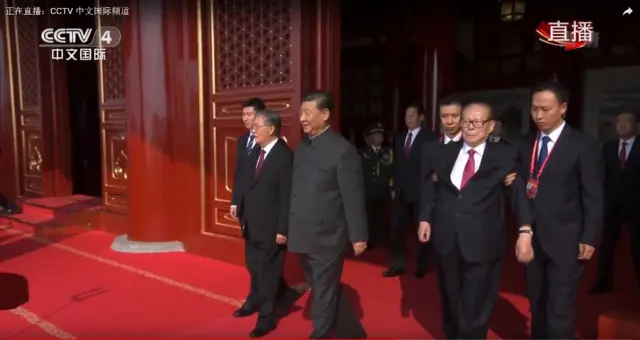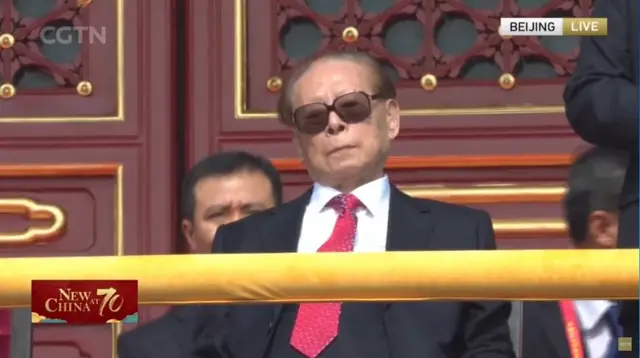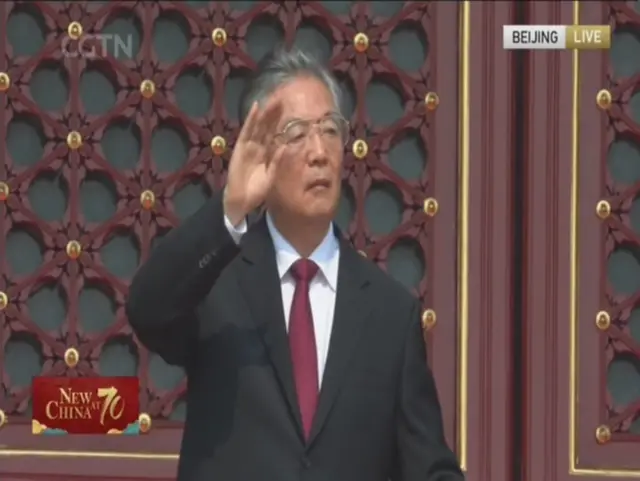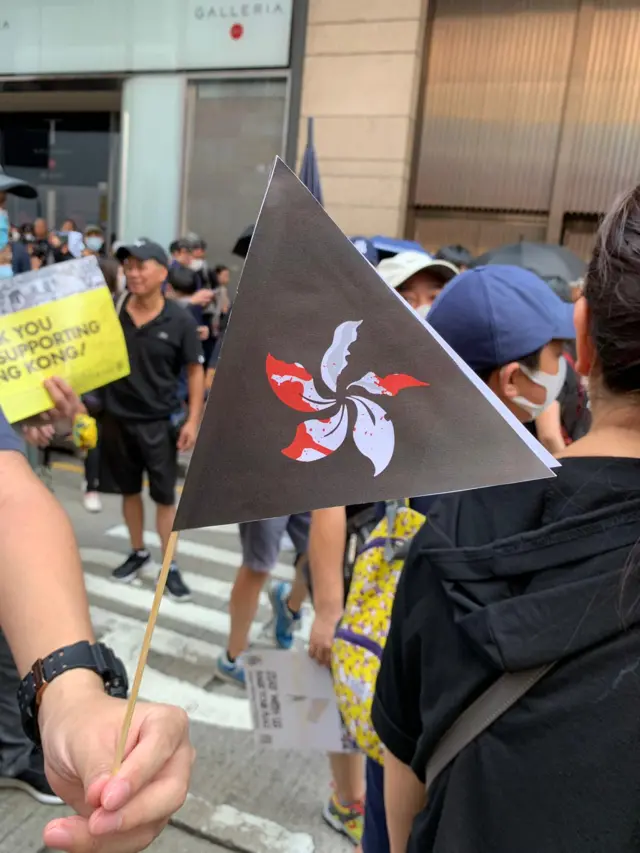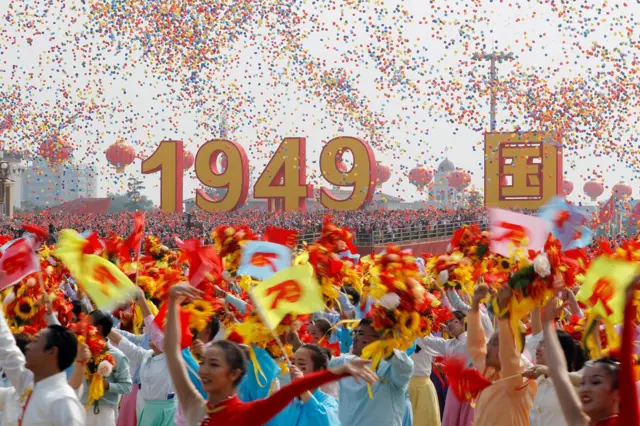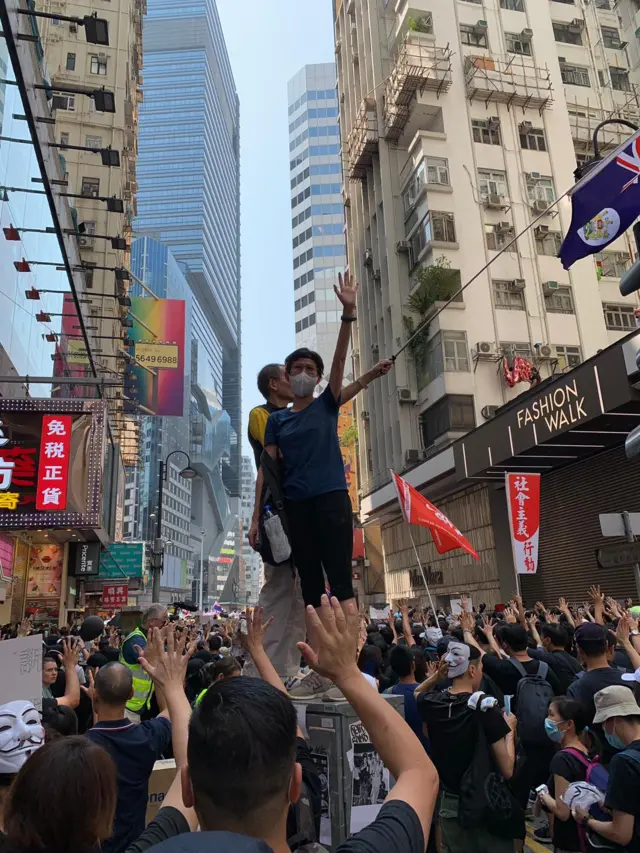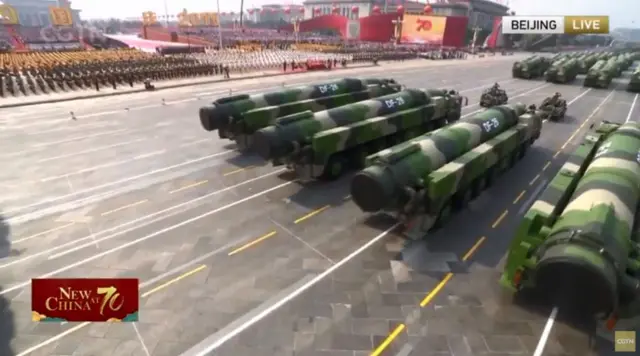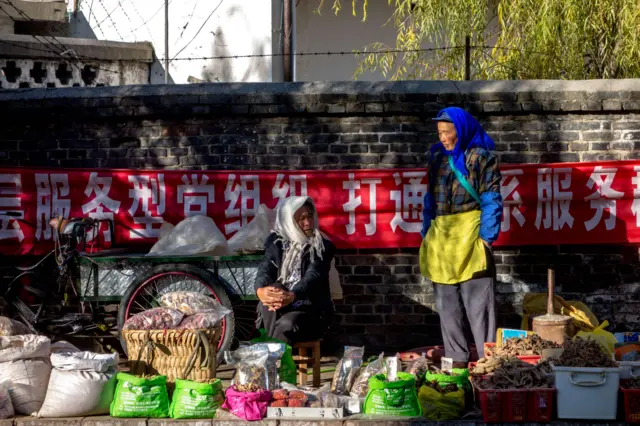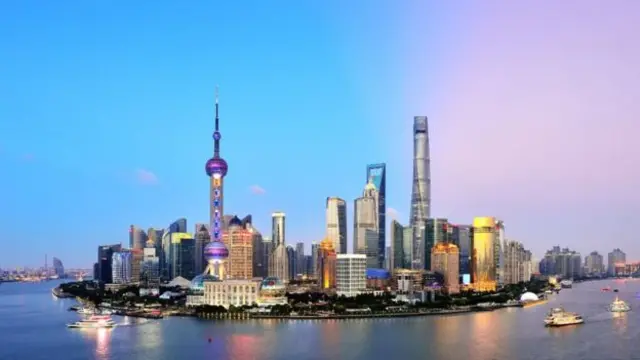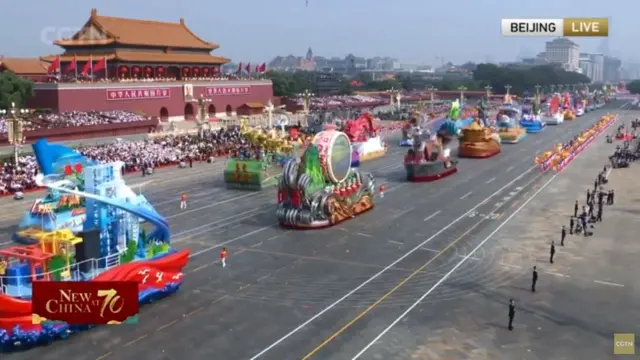First tear gas fired in HKpublished at 08:31 BST 1 October 2019
Grace Tsoi
BBC News, Hong Kong
Police have fired today’s first tear gas in the working-class neighbourhood of Wong Tai Sin in Hong Kong.
The first canister was fired outside of a shopping mall as hundreds of protesters in black were trying to occupy a major road.
My colleague Danny Vincent is at the scene. He saw a few protesters throw paving stones at a police van that was forced to drive off from the crowds.
